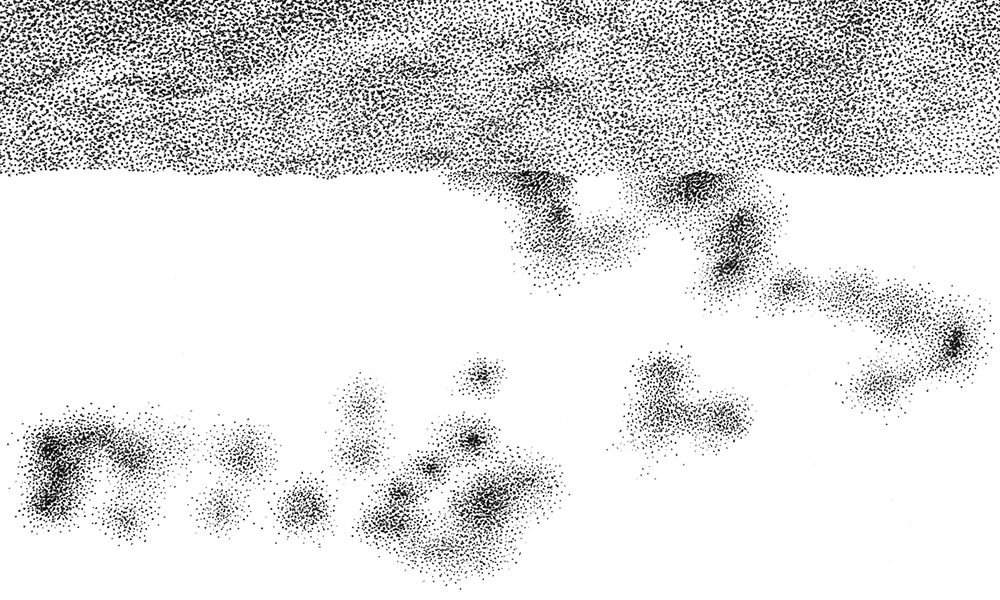
Exhibition Concept
In 2013, artist and curator Yujin Lee invited me to participate in an exhibition called Connecting Dots. The concept behind the exhibition took some inspiration from the Surrealist game called "exquisite corpse," in which multiple creatives create a singular work of art by passing the work back and forth in a series of steps. In this case, however, Yujin devised a system for collaboration which jumped between multiple mediums of artistic expression. The invitation to participate included the following diagram to explain the process:

The above diagram is further clarified on Yujin Lee's website with the following description:
The initiating drawing* will be shown to two writers. They will each write a work inspired by the single drawing (it may be a fictional story or a poem in the native language of the writers). Each writings will be translated by a certified translators into the native language of the two musicians, who will each compose a music inspired by each writings. Each musical scores will then be given to each of the two dancers, who will create a choreography onto the music. Finally, the two dance videos will be each shown to two groups of five visual artists, whom will all create a “drawing” inspired by the dance without the music. *Drawing by Gerhard Richter (Drawing II, graphite on paper, 59.5 x 40.38 in, 2005)
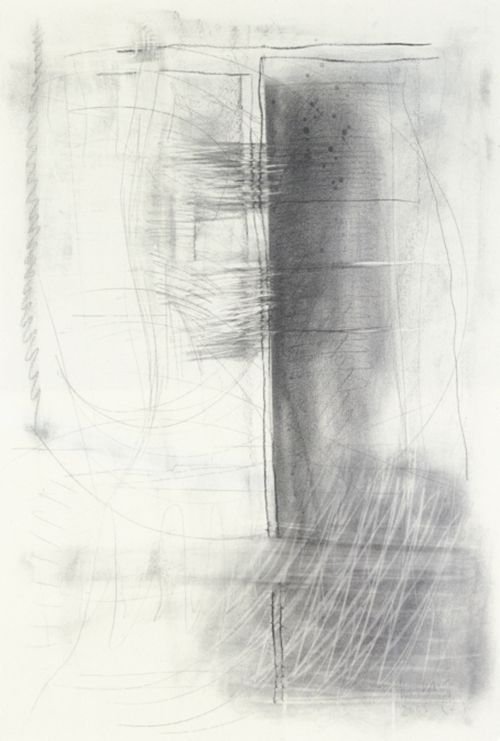
And so, the process began with the above drawing by Gerhard Richter. Passed through the creative minds of a writer, a translator, a musician, and finally a dancer, its concept came to me in the form of a dance, which I was tasked with translating back into a drawing of my own creation.
The Dance

My first introduction into this collaboration process was receiving a video of a dance by Liza Alpízar Aguilar, a Costa Rican dancer. The video has no accompanying sound and shows Liza dancing on the steep face of a sand dune. The aspects of the dance I found most interesting are the tracks she leaves behind as she moves across the surface of the sand. I took her decision to do the dance on a sand dune to be a very purposeful one, as it is one of the few surfaces that allows her to leave behind a very clear physical memory of each one of her movements. I decided to use these tracks as the inspiration for my drawing, which would somehow need to translate her movements into a still work of ink on paper. I started the process by separating out the still images of the sand dune before and after her dance, to compare the effects her movements had upon its surface:
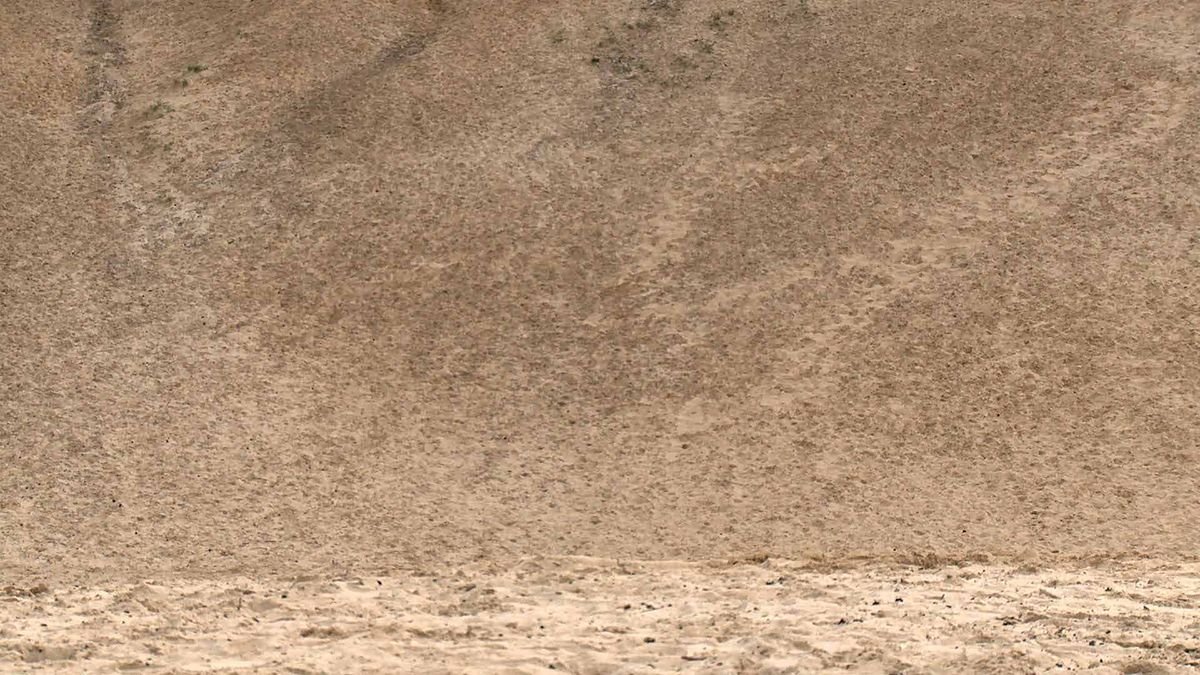
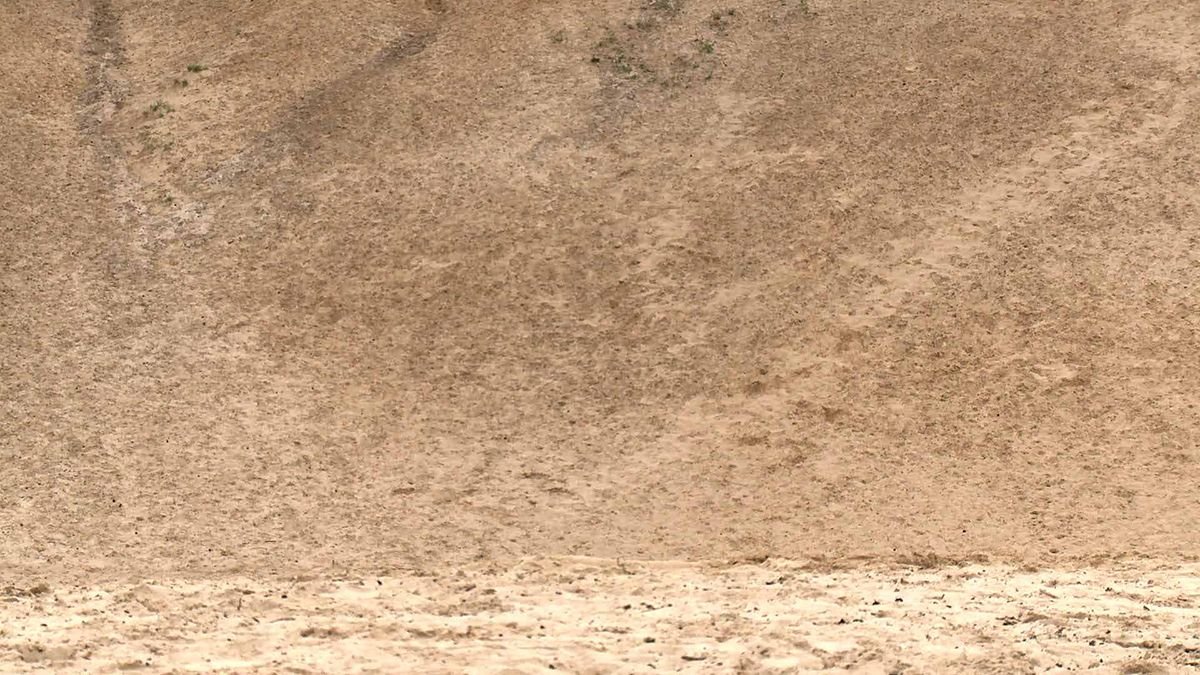
The changes are subtle, but the subtleties are what makes the dance so successful. The fact that her art leaves a permanent yet delicate marking on the dune is what makes it so beautiful. I can't presume to know the deeper meaning of her work, but I see it as a warning to the effects that we humans can have on our natural surroundings, even when we're not aware.
The Translation Process
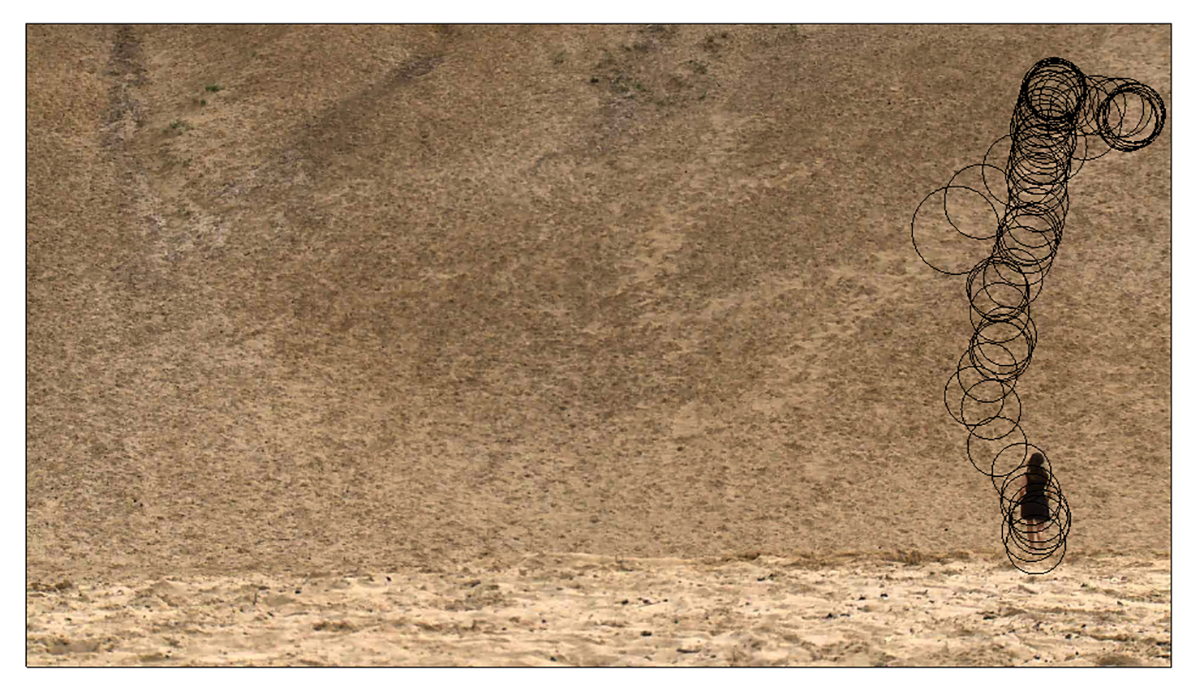
After separating out the before and after images of the dune, I went frame by frame and recorded the location of each of her steps on the surface of the dune, the beginning of which is shown above. After recording each location, I laid out each frame three dimensionally in a program called Rhino, with the before image of the dune at the bottom and the after image of the dune at the top, with all the steps that connect the two images spanning between them:
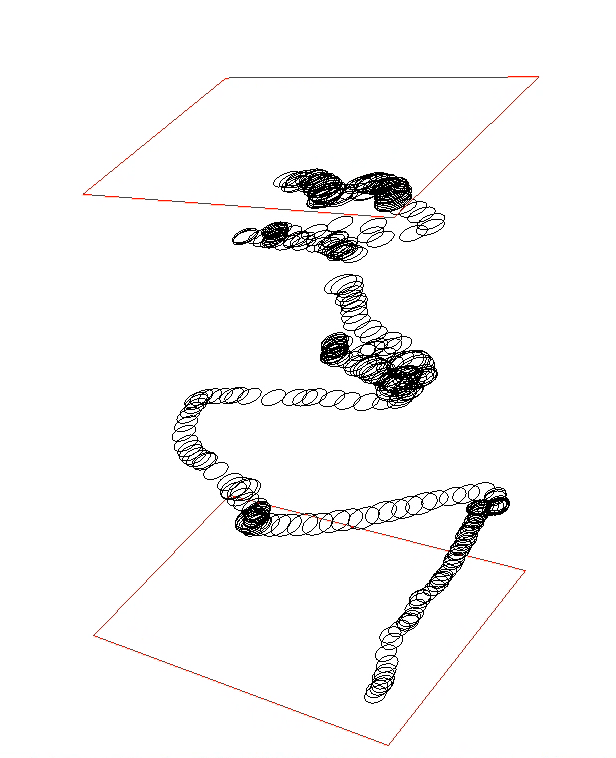
With this information I then used Illustrator to convert the 3D model into a digital sketch of the drawing to come:

Dance Becomes Drawing
Alas, with digital sketch in hand, I created the final drawing below:
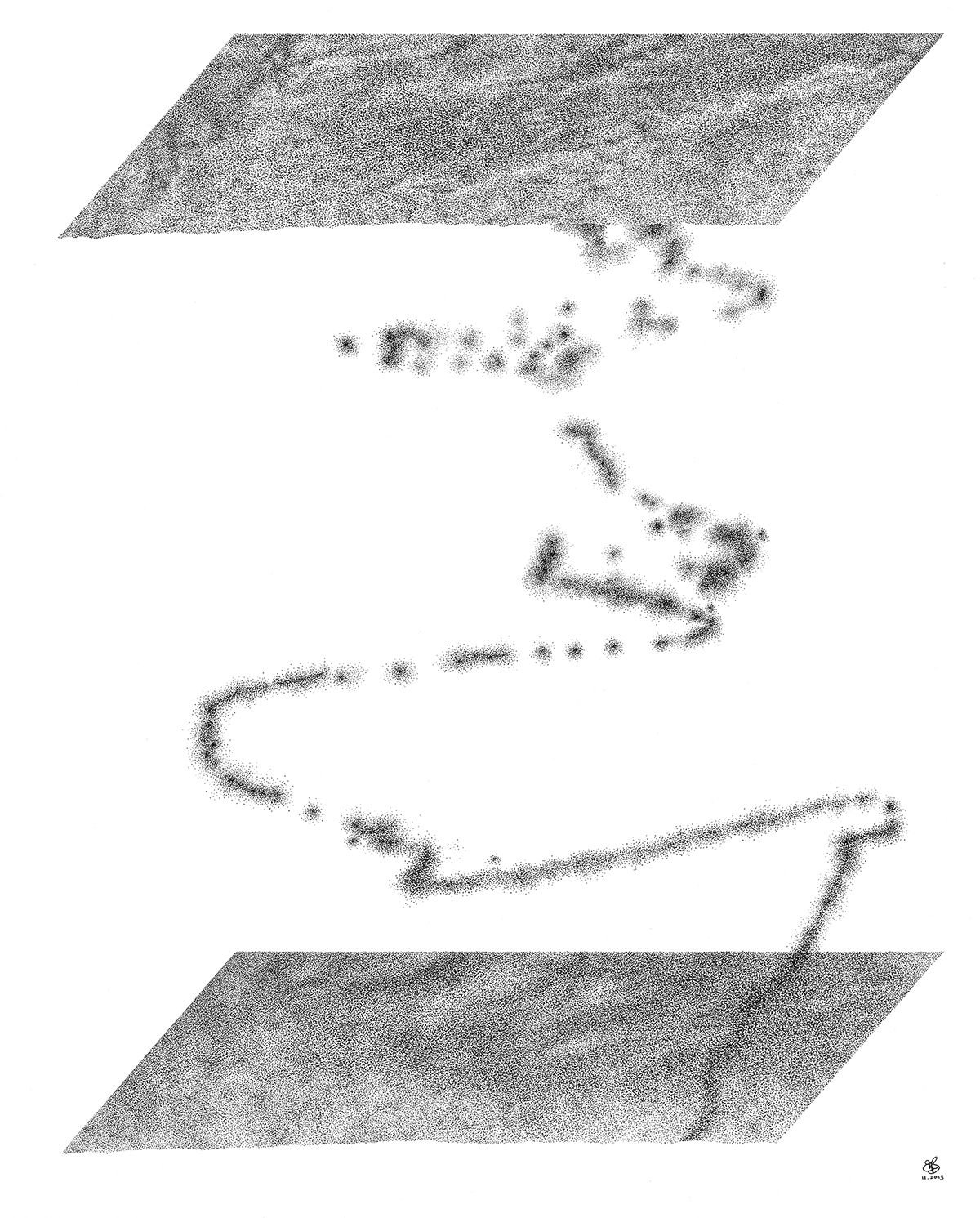
My favorite part of this drawing is the path connecting the two phases of the sand dune. I like to think of it as a wormhole that connects the dancer from her first step on the untouched dune to her last step at the end of the dance. Each moment in the dotted path of my drawing looks as if it's the sand that was kicked up as Liza glided across the surface of the dune. I'm sure very few visitors to the exhibition were aware of how much thought was put into the location of each burst of dots on my drawing, but hopefully the precision of the final product made it clear that it was a thoughtful translation of Liza's original dance. It's interesting to think that through a five step process of translation, Gerhard Richter's original drawing became my own drawing above.
The Final Exhibition
The exhibition was presented at aquabit Art gallery in Berlin, Germany in January of 2014. It included the works of Rebecca Agnes (IT, visual artist), Liza Alpízar Aguilar (CR, dancer), Eric Ross Bernstein (US, visual artist), Nathan Catlin (US, visual artist), Christine Cheung (CA, visual artist), Emanuele Crotti (IT, visual artist), Ariel Gout (FR, visual artist), Robert Hope-Johnstone (UK, visual artist), Simon Jardin (FR, poet), Danbee Jo (KR, dancer), So-Rim Lee (KR, writer), Mareike Lee (CA, visual artist), Nicolas Manenti (FR, visual artist), Nevo Ron (IL, musician), Jamie Ross (UK, musician), Agata Sasiuk (PO, visual artist). Take a look at the works by these other talented artists below:

To see more work by curator and artist Yujin Lee, check out her website here.
Let me know what you think of my translation process in the comments below!

